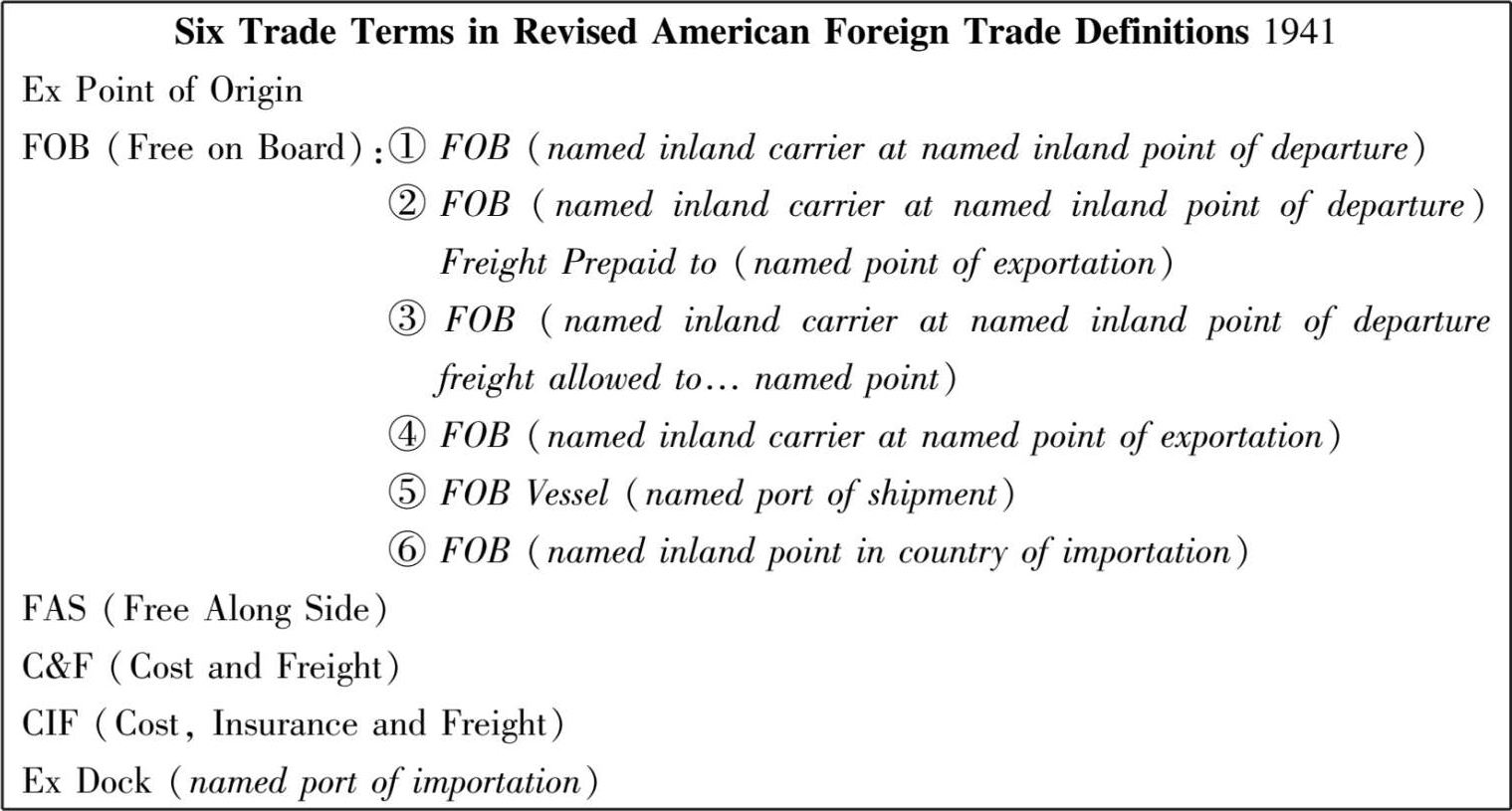




In international trade, buyers and sellers from different countries will be involved. Due to different customary practices of trade in different countries, a well-established system which is used for explaining and regulating the use of trade terms is very essential in international trade.There are mainly three most-adopted sets of rules in interpreting the use of certain trade terms.
In the middle of the 19th century, the trade term CIF(Cost, Insurance and Freight)was widely used in international trade. But because of the different explanations of CIF in different countries, the sales contracts based on CIF met great obstacles. In order to make a clear stipulation for the duties and obligations of both parties involved in the transaction under CIF, the International Law Association established a set of uniform rules for the sales contract under CIF in the capital city of Poland, Warsaw in 1928. There were altogether 22 provisions and this set of rules was called " Warsaw Rules 1928 ". Later, after the successive amendments on the meetings in New York(1930), Paris(1931)and Oxford(1932), the total number of the provisions was reduced to 21. This final version with 21 provisions was renamed as " Warsaw-Oxford Rules 1932 ".
Issues such as the respective duties and obligations for both the seller and the buyer in the transaction as well as the transfer of ownership and the risks, etc. are specified in detail. This rule is still in use up to now. However, it is not legally binding on any import and export transaction, and is only adopted voluntarily by both parties. It shall only be legally applied when both parties indicate the adoption of the rules in the sales contract.
In 1919, 9 business groups in the United States formulated a unified interpretation of the definition of foreign trade, called " U. S. Export Quotations and Abbreviations ". Later, in view of the change and evolution of trade customs and business practices, this document was revised at the 27th National Foreign Trade Conference of the United States in 1940. On July 30, 1941, the " Revised American Foreign Trade Definitions 1941 " was formally completed and adopted by the joint commission of the American Chamber of Commerce, the American Export-Import Association, and the American National Foreign Trade Association.
This definition explains 6 trade terms, namely, Ex Point of Origin, FOB, FAS, C&F, CIF, and Ex Dock. It is worth noting that the definition divides FOB into 6 different variants. Among them, only the 5th kind, named FOB Vessel , has a similar meaning as FOB in Incoterms, while the other 5 variants of FOB have completely different meanings. However, this set of rules is still widely used in the area of North America nowadays. When transacted with the buyer from North America, the seller needs to pay special attention to the definition of the trade term used.

The misunderstanding caused by various interpretations of trade terms in different countries hinders the development of international trade. In order to facilitate the use of trade terms by businessmen, it is necessary to have an accurate and internationally-adopted system for the interpretation of trade terms. Hence, after several years of consultation and discussion, the International Chamber of Commerce(ICC)finally published a set of interpretation rules of trade terms in 1936, which was called International Commercial Terms(Incoterms). In order to meet the needs of the development of international trade practice, ICC revised and supplemented Incoterms many times in 1953, 1967, 1976, 1980, 1990, 2000, 2010 and 2020.